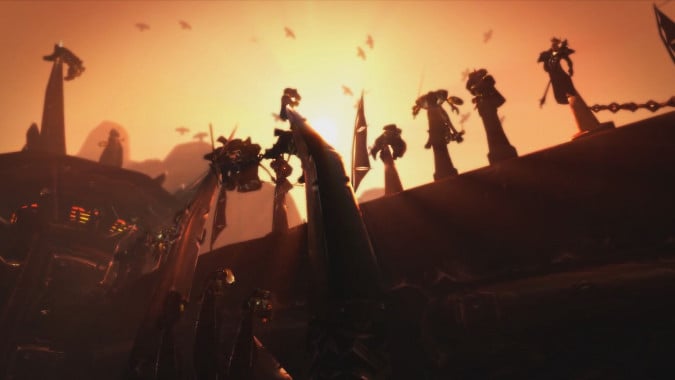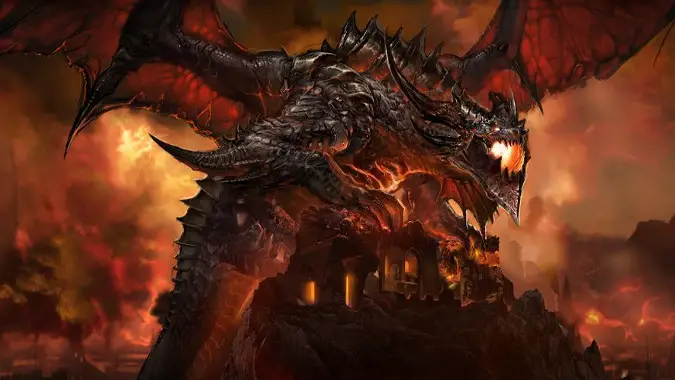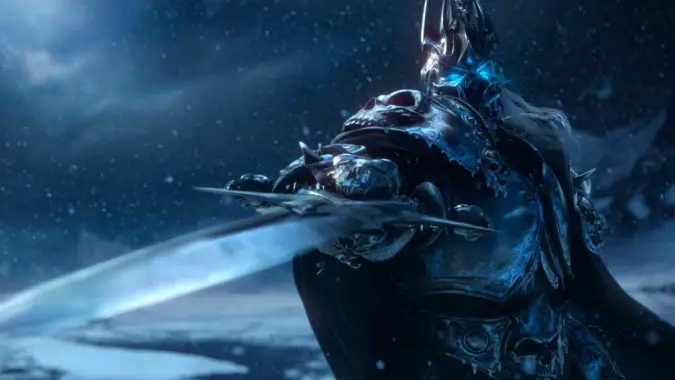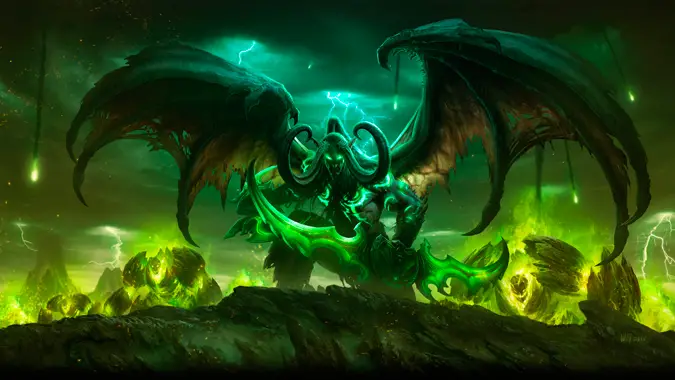How to avoid content droughts in WoW

I’ve been thinking about this one a lot, ever since the end of Wrath of the Lich King. Why? Well, the Fall of the Lich King — patch 3.3 — was released on December 9, 2009 and Cataclysm was released on December 7, 2010. Yes, there was the Ruby Sanctum released in the middle of that year, but still, in terms of content droughts it was the first major one most players experienced and it highlighted a serious problem that World of Warcraft has repeatedly undergone since. The final content patch of an expansion is released, and then life in World of Warcraft stops. Nothing new happens. Amazingly, Cataclysm actually had one of the shorter waiting periods, with ten months between the last patch of that expansion and the launch of Mists of Pandaria.
These waiting periods, which I’m calling ‘content droughts’ because that’s what they feel like and often what they are, have been the bane of World of Warcraft‘s existence. Everyone knows they’re terrible. The players, the developers, everyone even tangentially involved in this game knows it’s the months of waiting for something new that has the worst effect on subs, on guilds, on everyone. So how do we overcome them? How does World of Warcraft go forward without them in the future?

The Destroyer of Story
We know from experience that Blizzard can deliver a lot of content heavy patches. Both Cataclysm and Mists of Pandaria had them. With Mists, the biggest problem seemed to be the timing of its patches. At the time we all thought it was amazing that Landfall, patch 5.1, could drop in late November when the expansion itself had launched in late September, less than two months passing. And then we got patch 5.2 on the PTR in January, and live by March of 2013, seemingly amazing turnaround time that only continued with the Escalation patch 5.3 in May and Siege of Orgrimmar itself in September. We went four patches from expansion launch to final patch in less than a year and all of them had at least some content, with both Landfall and The Thunder King having a lot of content, as did the Siege patch.
And then of course we went from September of 2013 until November of 2014 with no new content. That period of drought was enormous, and worse, it was to some degree avoidable just by staggering patches better. If we’d gotten patch 5.1 in January of 2013 instead of late November of 2013, and then pushed back each subsequent patch the same period of time, we’d have had 5.2 in May, 5.3 in July and 5.4 in November, cutting the drought down to a year. That’s still a very long drought, but if you’d then added a month between each subsequent patch, you’re looking at February of 2014 for Siege, and a much more manageable ten month drought.

Frozen
The question, however, isn’t just how Blizzard could have done that better, but rather this — are these droughts avoidable? Because I think avoiding them is necessary, and Warlords of Draenor shows that they don’t have to be at the end of the expansion to be deleterious for the game. Warlords of Draenor launched in November of 2014, and then there was no major content released for the game until patch 6.2 in late June of 2015, nearly eight months later. We’re now four months into that patch and we have no idea when we’ll see more content (as much as I love Timewalking, it’s not new content) aside from a single quest for Heroic/Mythic raiders. No new dungeons have appeared at all this expansion, we lost scenarios so we lost small group content, we got Tanaan’s open world exploration but lost daily quests, and the Garrison Campaigns are time gated and ultimately non-repeatable. In terms of content released, this is not really an acceptable pace, but there is hope on the horizon.
With BlizzCon around the corner and Legion likely to be heavily featured, my hopes are for the following:
- An immediate Legion beta. This has to happen.
- A shorter beta period. I’m aware that WoW expansions often need a lot of beta testing, but they’ve been working on this thing for as long as Warlords was in development. It’s time to get in, get the bugs ironed out, and get it released by April 2016 at the latest.
- A meaningful pre-expansion patch that has content for players who managed to hang on. We need the story for Legion set up in a meaningful way, not just a bunch of random quests in the Blasted Lands foiling an invasion we never really experience.
- Content patches during the expansion.
- Content patches after the major story end of the expansion.
One of the things World of Warcraft hasn’t done yet is a real aftermath to any of its expansion stories. Frankly, this has grown intolerable. We’ve defeated Deathwing and moved right into Pandaria, blew up the Vale and then just ran off to Draenor. After we defeat whatever the major boss of Legion turns out to be, it’s time for at least one content patch with dungeons and quests and story about what happens after we save the world.

A less punctuated equilibrium
One of the ways to do this would be to break up what we get in a patch. World of Warcraft tends to patch in bursts, dropping very large content/upgrade/changes in chunks and then doing smaller patches that iron out issues. The four Mists of Pandaria patches are a good example of this, especially Patch 5.3. It dropped Heroic Scenarios, the Battlefield Barrens quests for both Horde and Alliance, a new battleground and arena, and updates to the Brawler’s Guild.
If it had been broken up into several smaller patches over the course of a couple of months, instead of all at once, the impact wouldn’t have been lost as quickly. We tend to only focus on the parts of a patch that interest us personally. That’s human nature. By spacing it out, even if there’s nothing in an update that appeals to you you’re aware that the patch happened, and you get the sense of content being introduced to keep everything fresh. Another example is the Siege of Orgrimmar patch 5.4 release, which contained the Timeless Isle, the Siege of Orgimmar raid, Proving Grounds, and Flexible raid size (the precursor to modern Normal). We could easily have staggered it out so that the Timeless Isle and its world boss encounter was released before the Siege raid itself, giving players time to consume the open world content before moving on to the raid.
Distributing content in this fashion seems like the best way to avoid these content bomb/content drought cycles. I’m not talking content gating, where the content exists in game but you can’t get at it yet, I’m specifically saying that Blizzard should release smaller patches with less content per patch on a more frequent basis. If Mists had say, eight content patches instead of four, they could have been spaced out more frequently so that something was always happening. Combine that with an actual aftermath patch that deals with the fallout from an expansion’s major story arc and we could cut the end of expansion doldrums down significantly, if not remove them entirely.
One thing is clear. Players today will not accept eight months of nothing. Blizzard needs to do better moving forward. I believe they can. Now it’s time for them to prove it.
Please consider supporting our Patreon!
Join the Discussion
Blizzard Watch is a safe space for all readers. By leaving comments on this site you agree to follow our commenting and community guidelines.
 @MatthewWRossi
@MatthewWRossi




